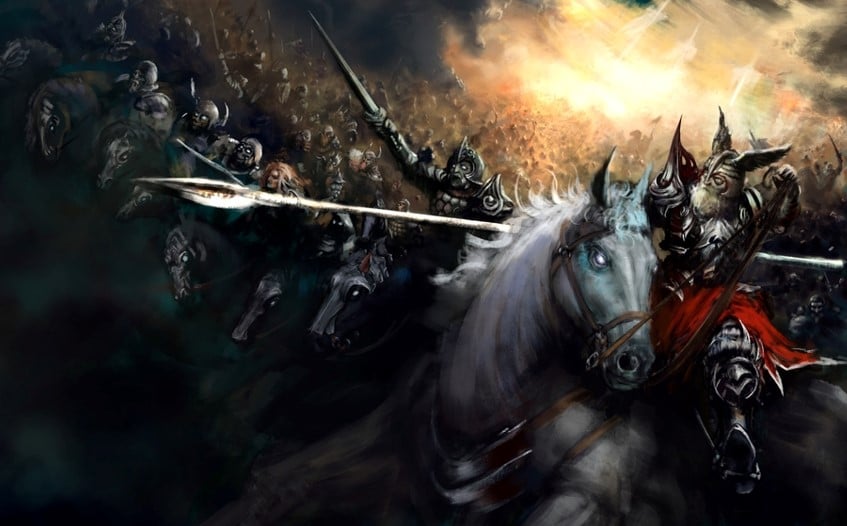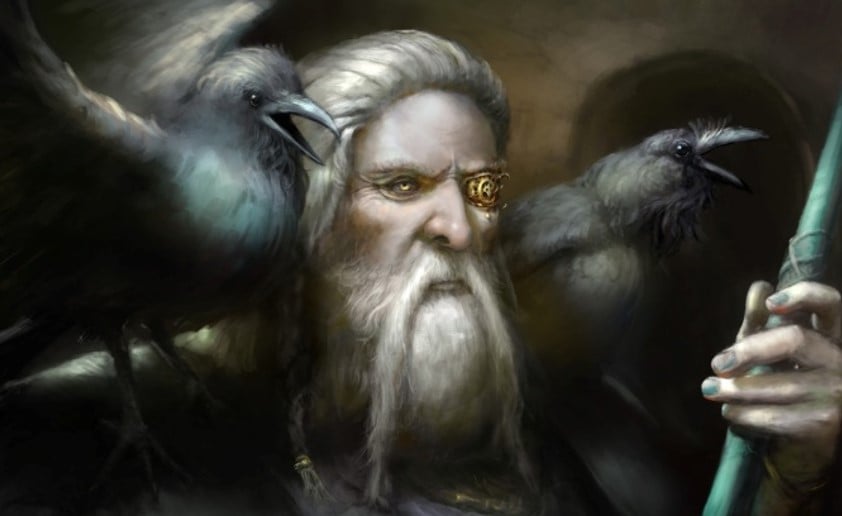Odinism is both a religion and a movement. To grasp the true meaning of Odinism, one must return to the Viking era. These Germanic and Scandinavian tribes had a deeply rooted belief in their gods, specifically the Norse god Odin or the All-Father.

The Germanic people of Northern Europe who practiced Odinism are said to have sailed throughout Europe and North America, where this movement has recently gained traction.
So, what is Odinism as it was in the past and as it is today?
The Meaning of Odinism
There are two sides to this coin. For one, Odinism is an ancient religion that emphasized praying to Norse goddesses and gods such as Odin, Freyja, and Thor. This is a pagan, polytheistic, pre-Christian religion that was largely practiced by the Vikings of Norway, Denmark, Sweden, and Iceland. The influence of this religion was also felt in other parts of Europe, such as England, Scotland, and Ireland.
In its original form, followers of Odinism are said to believe that nature is the true manifestation of the gods’ or their divinity. They also believe that human beings are inherently good.
Even though it’s an ancient religion with some questionable principles, countries such as Denmark, Iceland, and Norway have officially recognized Odinism since 1973 as it’s grown in popularity.
The Followers of Ásatrú
The followers of this ancient Norse paganism are called the followers of Ásatrú. Ásatrú is an Icelandic word that means “belief in the gods” or Æesir). Although the architects of this Norse religion mostly based it on Norse mythology and avoided any kind of association with racism, the same cannot be said about its new-age members.
Like most religions, this ancient polytheistic religion has many branches, some of which are extremist in nature and beliefs. Some of the branches include:
- Wotanism
- Wodenism
- Odin Brotherhood
- Odinic Rite
- Odinist Fellowship
The chief deity in Odinism is Odin, who is also called Woten, Woden, or the Alfadir (All-Father). Odin is the god of war, death, and wisdom. This modern heathen religion also worships a pantheon of other gods and goddesses, including:
- Loki, the trickster god
- Thor, the god of thunder
- Baldur, the god of purity and light
- Tyr, the god of war (original)
The believers of this old Norse religion and these Norse deities ascribe to the myth that there are nine home worlds, with Asgard being where the gods reside and Midgard being the home of the mortal humans (Earth). They believe that all of these worlds are linked by a massive ash tree known as the “World Tree,” or Yggdrasil in Norse culture.
There are many vestiges of Odinism in our modern world. Days of the week such as Tuesday are named for Tyr; the day Wednesday is named for Odin or “Woden’s day”; the day Thursday is named for Thor, “Thor’s day,” and the day Friday is named after Odin’s wife, the goddess of fertility, Frigg.

Odinism and White Supremacy
Although Odinism simply meant belief in the old Norse gods in pre-Christian Europe, modern interpretations have taken a different turn.
Today, there’s a branch of Odinism that is a race-based Folkish movement. This movement originated from the old Germanic Völkisch Movement, which shared ideologies with Nazi Germany.
This Germanic Völkisch Movement was the precursor to German Nazism and from where the common term “Folkish,” which is found in “Folkish Heathenry,” comes. This movement was born from a combination of extremist ideologies, such as the romanticization of ancient Germanic tribes, the glorification of the once great Holy Roman Empire, and sheer disdain for what they view as global modernization.
The proponents of this movement look to return Germany to a time in the past when ancient folk worshipped ancient Norse gods and established an Aryan ethno-nation that is purposefully designated for white Germans only. Among its key philosophies are the following:
- Anti-Semitism
- Aryan supremacy
- Racialism
Even though this movement is believed to have officially ended with the fall of Nazi Germany and Adolf Hitler’s death, some believers continue to adhere to its teachings.
This modern-day Odinism movement has been revolutionized and evolved with the contribution of some key figures, including:
Guido Von List
Guido Von List was an Austrian occultist who became an influential figure and a leader in the Völkisch Movement, which was, in turn, a huge inspiration for the Odinist movements. As a “Wotanist,” Guido Von List pioneered the “Aryan Esotericism” form called “Armanism” or “Ariosophy.”
This esotericism was designed at its core to glorify and preserve the Aryan race. He believed that he could help bring about a higher or nobler version of the Aryan race by consecutively breeding “superior” iterations of the same.
Alexander Rub Mills
In 1934, Alexander Rub Mills founded a church called the Anglecyn Church of Odin. Alexander Rub Mills’ teachings borrow heavily from Nazism, and the writings of Guido Von List inspired his entire movement.
His take on this religion included:
- An attitude that pitted Heathenry against traditional Christianity
- Belief that Odin is the father figure towering above all other gods
- Perceiving gods as archetypes
Even though Alexander Rub Mills was arrested for his sympathies with the Nazi party, he continued to publish some of his works on Odinism until his demise in 1964.
Else Christensen
Else Christensen was born in 1913 in Denmark. She would later come under the influence of Denmark’s largest Nazi party, the National Socialist Workers’ Party of Denmark, sometime in the 1930s. She moved to North America in 1951, where she learned about Odinism from the writings of Alexander Rub Mills.
Else Christensen, inspired by these writings, founded the Odinist Fellowship, America’s first heathen organization. She would then teach this religion to prison inmates in the 1980s. She was arrested for drug trafficking in 1993, but not before she gave a list of members to Stephen McNallen, who would then use that list to found the Asatru Folk Assembly of 1994.
As you can see, the definition and identity of Odinism are complex and fraught with controversy. It was, however, originally founded as a religion that believed in and worshiped the old Norse gods.



